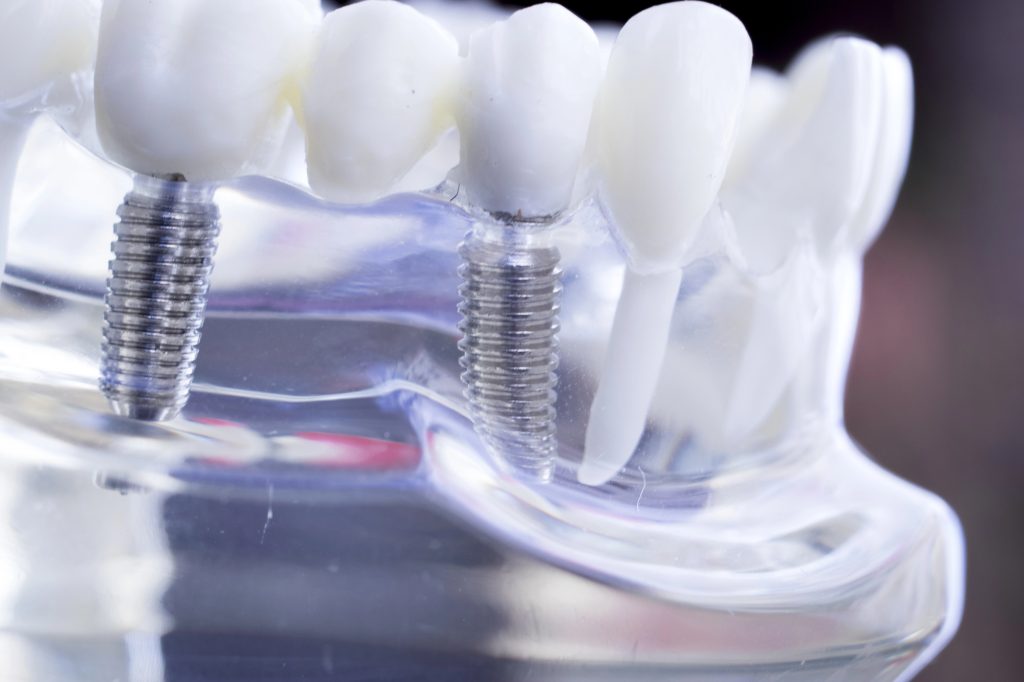
Are you missing a tooth? Two teeth? Or more? For many patients, dental implants are an excellent (and preferable) option for tooth replacement. But how many can you get? And what if you need an entire arc of teeth?
One great feature of dental implants is that they can be utilized in different ways for different circumstances, from replacing a single tooth to full mouth restoration.
How Dental Implants Work
In order to think about how many you can get, let’s get a basic understanding of what dental implants are. Technically speaking, dental implants themselves are small titanium posts surgically placed into the jawbone to act as artificial tooth roots.
Your jaw grows around and fuses to the implant, creating an extremely sturdy foundation for multiple tooth replacement options, including individual crowns, bridges to replace multiple teeth or full dentures.
No matter the number of implants you receive, dental implants provide significant advantages, including:
- Comfort: Chew, speak, and smile like you would with natural teeth.
- Long-Lasting: Dental implants often last decades with proper care.
- Preservation of Jawbone: Prevent bone loss and maintain your facial structure.
Single Tooth Replacement
The number of implants you might need varies depending on your situation. If you’re missing one tooth, and the rest of your teeth are healthy and do not require replacement, one implant is all that will be needed. The procedure is straightforward, making it a common solution.
However, if multiple adjacent teeth are missing, or if you have teeth that have suffered significant decay or other dental issues that may lead to replacement in the future, your dentist may suggest tooth extraction and a different implant strategy.
Multiple Teeth Replacement
Technically, a separate implant could replace every tooth in your mouth. However, this would be extremely impractical, time-consuming, and costly. Luckily, you don’t need an implant for every missing tooth. In order to replace multiple teeth, we would typically consider utilizing fewer implants to support multiple replacement teeth.
Implant Supported Bridge
If you are missing several teeth in a row, an implant-supported bridge is typically an excellent option. Rather than replace each individual tooth with a singular implant, implant posts would be inserted at the two furthest positions. These two implants would support a bridge, similar to a traditional dental bridge, that spans the gap.
Implant Supported Dentures
This method uses just four to eight strategically placed implants to hold an entire arch (all of your upper or lower teeth). The number of implants may vary for added stability depending on the patient.
The result? This strategy keeps cost and discomfort down but still provides a well-functioning and natural-looking replacement, using as few implants as possible.
How Many Implants Can Be Placed in a Single Procedure?
If you require multiple implants, you might wonder if they can all be placed during one visit. The short answer is often yes, but this may depend on individual circumstances like jaw density, individual tolerance, and other health factors.
Benefits of Placing Multiple Implants at Once
- Reduced Treatment Time: Placing multiple implants in one session minimizes the need for repeated appointments.
- Single Recovery Period: You’ll only need to recover from one surgery, reducing total downtime.
When to Consider Staggered Placement
- If you require bone grafting or additional procedures beforehand.
- Specific health considerations or low tolerance for extended procedures.
- If you have concerns about healing and post-procedure discomfort.
Get Personalized Guidance from a Professional
The question of how many dental implants you can get and when depends on a combination of factors. Only an experienced dental professional can give you the best recommendation for your circumstances.
If you’re ready to find out more about how many dental implants you need to restore your smile, reach out to our office today.